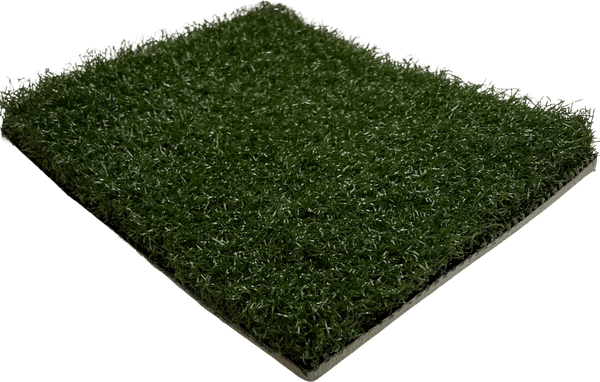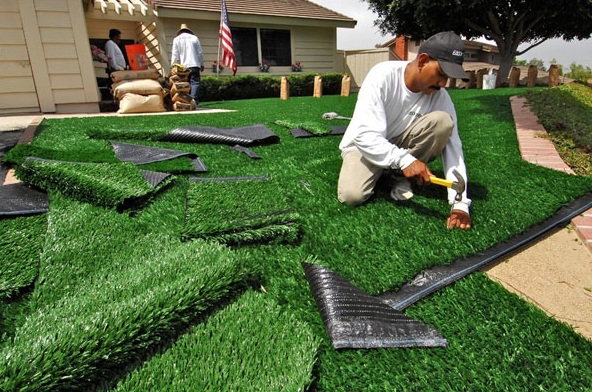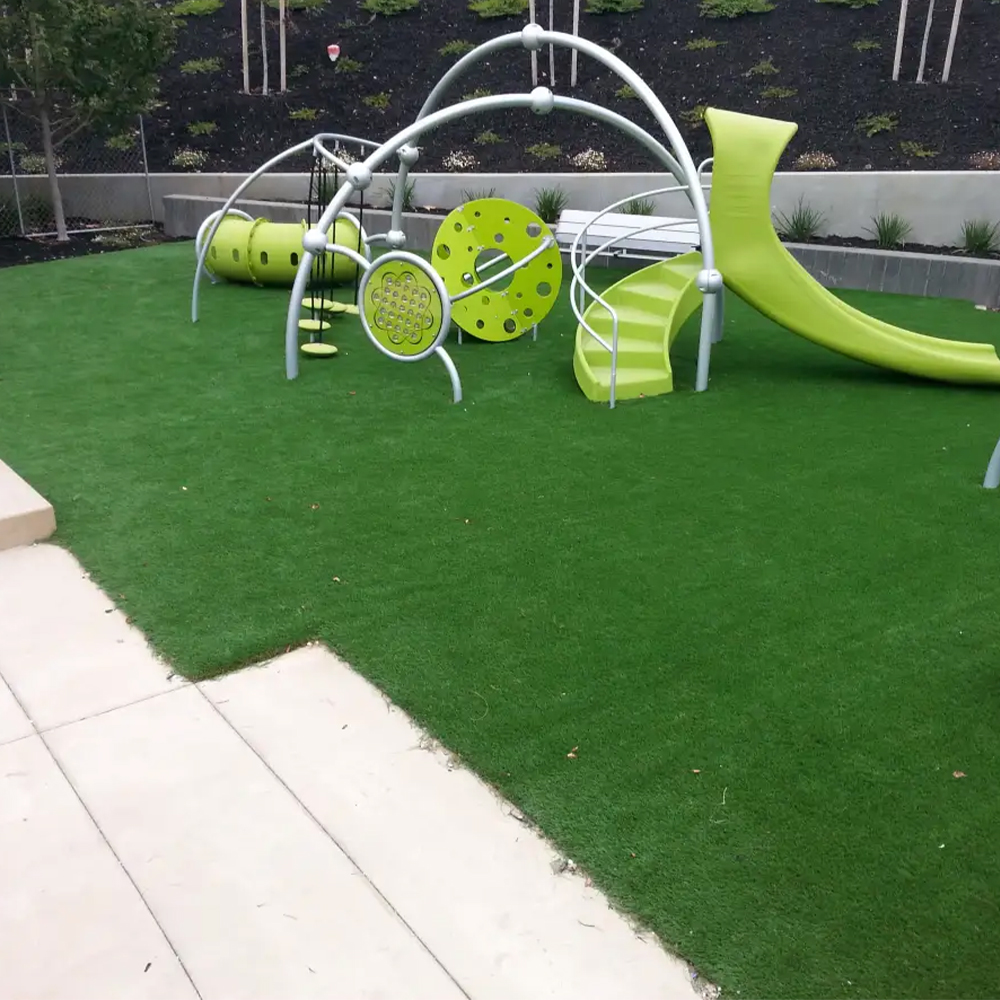Explore the Environmental Perks of Opting for Synthetic Grass Solutions
The adoption of synthetic grass options offers a compelling chance to address pushing ecological challenges. By significantly decreasing water use and lessening the application of unsafe chemicals, these alternatives not only promote sustainable landscape design however additionally protect regional communities. The reduced carbon impact connected with lowered maintenance tasks contributes to a much more sustainable method to land management. Nonetheless, the ramifications of these advantages prolong past mere conservation efforts, questioning concerning their lasting effect on habitat conservation and general environmental balance. Discovering these measurements exposes a complicated interplay worth taking into consideration.
Water Preservation Perks
Among the most considerable benefits of man-made grass is its capability to conserve water. Conventional lawn yards call for significant irrigation, specifically in locations susceptible to drought or water restrictions. In contrast, synthetic turf does not require watering, substantially lowering the total need for water resources. This function is specifically valuable in deserts where water shortage is a pushing concern.
By eliminating the need for routine watering, synthetic grass contributes to lasting landscape techniques and assists reduce the environmental influence of extreme water intake. Furthermore, the conservation of water reaches the decrease of drainage, which can lead to dirt disintegration and waterway contamination.
In addition, the installment of fabricated turf allows municipalities and homeowners to allot water resources more successfully, concentrating on essential uses such as alcohol consumption water and agriculture. The shift in the direction of synthetic grass not just promotes liable water usage but likewise straightens with broader environmental goals focused on maintaining all-natural resources.
As communities progressively focus on sustainability, the water preservation advantages of synthetic turf offer an engaging case for its adoption in industrial and domestic landscape design projects.
Minimized Chemical Usage
The transition to synthetic grass considerably decreases the dependence on chemical therapies commonly made use of in natural grass upkeep. Conventional lawn monitoring generally includes the application of chemicals, plant foods, and herbicides to advertise development and control insects. These chemicals can pose risks to human wellness, neighborhood wild animals, and the atmosphere, adding to dirt and water contamination.
In comparison, synthetic grass eliminates the need for these unsafe substances. Once mounted, it requires very little upkeep, primarily consisting of regular cleaning and seldom infill replenishment. This reduction in chemical use not only benefits the instant setting however additionally adds to broader eco-friendly stability. By reducing the launch of synthetic substances right into the community, fabricated turf advertises healthier soil and water systems.
Additionally, the absence of chemical overflow related to artificial turf installments assists safeguard regional rivers from air pollution, supporting marine life and maintaining biodiversity. Arizona artificial turf. As areas increasingly prioritize sustainable techniques, going with man-made grass provides a practical service that aligns with environmental conservation goals. Through this change, homeowner can enjoy lush environment-friendly rooms without jeopardizing eco-friendly health and wellness, leading the method for a much more sustainable future
Reduced Carbon Footprint

In addition, the installation of synthetic grass can result in significant water conservation. All-natural lawns need substantial quantities of water for watering, which not only adds to the carbon impact connected with water extraction and treatment but also stress regional water sources. On the other hand, synthetic turf needs very little upkeep, requiring no watering, therefore substantially reducing water use and its associated energy prices.
Furthermore, the durability of artificial turf contributes to its reduced carbon impact. With a lifespan of approximately 15 years or more, the demand for constant replacements is reduced, causing much less waste and reduced power usage in production and dealing with typical turf alternatives. In general, synthetic grass offers a lasting choice for environmentally mindful landscape design.
Habitat Preservation
Environment conservation is a critical learn this here now consideration in the dispute over landscape design options, specifically when contrasting synthetic grass to natural lawn. Natural grass yards usually call for extensive maintenance, consisting of making use of plant foods, chemicals, and herbicides, which can negatively influence regional ecological communities. These chemicals can leach right into the soil and waterways, harming native flora and fauna and interfering with regional habitats.
On the other hand, synthetic grass provides a chance to minimize the ecological footprint of landscape design. By deciding for synthetic lawn, house owners can decrease the disruption of all-natural environments linked with conventional grass treatment practices. Fabricated lawn eliminates the demand for hazardous chemicals, therefore protecting nearby wildlife and maintaining the stability of surrounding ecological communities. The setup of synthetic turf can lead to the conversion of former turf locations into even more biodiverse landscapes, such as pollinator gardens or native plant locations, which can sustain regional wildlife.
Eventually, the transition to artificial grass not just preserves water and reduces maintenance efforts however also fosters an extra harmonious connection in between human activities and the natural surroundings, promoting environment conservation at the same time.
Long-Term Sustainability
Long-term sustainability is a crucial variable in evaluating the advantages of man-made grass over standard grass yards. One of one of the most substantial advantages of fabricated grass is its longevity; it can last up to 15-20 years with very little maintenance, whereas all-natural grass requires constant reseeding and substitute. This durability reduces the requirement for consistent resources, such as water, plant foods, and chemicals, which are crucial for preserving a healthy and balanced turf lawn.
Additionally, man-made turf adds to a decrease in carbon discharges related to lawn care equipment. Traditional yards often need gas-powered mowers, trimmers, and blowers, all of which contribute to air contamination. Arizona turf. In comparison, synthetic grass removes the demand for such equipment, advertising a cleaner environment
Additionally, the production of synthetic grass increasingly makes use of recycled products, enhancing its sustainability profile. As producers adopt environmentally friendly methods, the ecological impact of synthetic turf continues to lessen.

Verdict
The adoption of man-made lawn solutions provides significant ecological benefits, consisting of considerable water conservation, this website decreased dependence on harmful chemicals, and a reduced carbon footprint. Additionally, synthetic lawn aids in protecting all-natural address environments by lessening land disturbance and promoting long-lasting sustainability through the usage of long lasting products. Jointly, these factors highlight the capacity of synthetic grass to contribute positively to ecological health and wellness and offer a feasible option to traditional landscaping techniques in a significantly resource-conscious globe.
In comparison, synthetic grass does not need watering, substantially reducing the overall demand for water sources. By reducing the release of artificial compounds right into the environment, synthetic turf promotes healthier dirt and water systems.
Moreover, the setup of synthetic grass can result in significant water preservation. In contrast, synthetic grass requires marginal maintenance, needing no watering, consequently considerably reducing water usage and its linked power costs.
